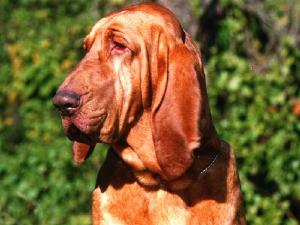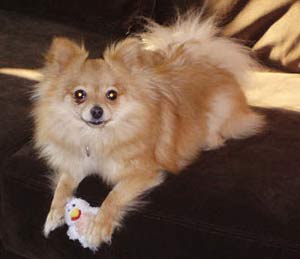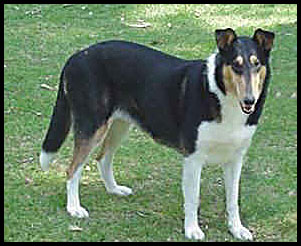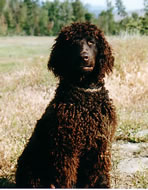
Dogs
The Rhodesian ridgeback, also called the African lion hound, is a handsome and regal dog with a streak of independence. Not for everyone, this dog is devoted to his family and requires firm and consistent handling.
During the 16th and 17th centuries, various European settlers decided to leave their homeland and set up a new home in South Africa. Along with their families, they also brought along their family dogs, including Great Danes, mastiffs, bloodhounds and terriers. These dogs, though wonderful companions and excellent at their own particular skills, weren't able to provide everything these Boer farmers required.
These farmers needed a dog that could guard the farm, flush out birds and pull down wounded gazelle. The dog also needed to be able to withstand the difficulties of the African bush, including rapid and significant weather changes. In order to develop this "perfect" dog, the farmers looked to the dogs bred by the Hottentots, a native South African race. Their dogs were semi-wild hunting dogs with a ridge down their back. These dogs were crossed with the settlers dogs, resulting in the foundation stock of the Rhodesian ridgeback, one of only two breeds of dog in the world with a ridge of hair down their back (the other is the Thai ridgeback).
Eventually, in 1877, the first ridgebacks were taken into the country of Rhodesia, now known as Zimbabwe. Big game hunters in the area soon found that these dogs were excellent hunters and seemed to do very well helping in the hunt of lions. The hunters would travel on horseback and the dogs would run along side. When a lion was found, the dogs would chase, harass and run around the lions to confuse and bewilder them. This would give the hunters a chance to come closer to the lions for the kill. Despite the myths, the ridgeback did not attack and kill lions.
Breeding of these dogs continued and progressed in Rhodesia. By 1922, the breed standard was developed and the breed was named the Rhodesian ridgeback, despite his origination from South Africa.
By 1950, the ridgeback had entered the United States and was recognized by the American Kennel Club in 1955 as a member of the hound group.
Handsome and dignified, the Rhodesian ridgeback is a regal looking dog. The head is flat and broad with round sparkling eyes that gives the dog an intelligent expression. The eyes should blend with the color of the nose. If the nose is black, the eyes are dark. If the nose is brown, the eyes are amber. The ears are medium in size and set high on the skull. The base is wide and tapers to a rounded point. The muzzle is long and powerful.
The body of the ridgeback is strong and powerful with a deep chest. The tail is tapered with a slight upward curve. The tail should not be curly nor be carried high. The hair coat is short and glossy and ranges in color from light wheaten to dark red. Some white may be present on the chest and toes.
The most distinctive feature of the Rhodesian ridgeback is their ridge. It is a ridge of hair along the back that grows in the opposite direction to the rest of the hair coat. The ridge begins just behind the shoulders and continues to a point at the level of the hips. At the beginning of the ridge, two symmetrical whorls (called crowns) lie directly opposite each other. This results in a broader ridge at the top. As the ridge continues down the back, it narrows until it tapers at the level of the hips.
The ridgeback stands 24 to 27 inches at the shoulder and weighs 70 to 85 pounds.
The Rhodesian ridgeback is a clean dog that is considered low maintenance. The breed is usually friendly toward family and friends but does not really care for strangers.
The ridgeback is a strong and powerful dog that enjoys activity and has great endurance. He is a strong willed dog that often stands his ground, and it is very important that he understands that his owners are the dominant members of the family. Timid people or ones that tend to allow the dog to rule the house should consider a different breed.
A devoted and loyal dog to his family, the ridgeback can be aloof and possibly aggressive toward strangers. Even though he is a large dog and loves running around a secured yard, this breed enjoys the indoor life. Clean and quiet, the ridgeback is a remarkably ideal house dog.
When taken outside, the ridgeback should be leashed or kept in a secure yard with a tall fence since some dogs are not too fond of strangers.
A natural protector, the ridgeback doesn't need much training to be a good watchdog and guard dog but training in protection work is not recommended. An aggressive ridgeback can be difficult to control.
Obedience training is strongly recommended and should begin when the dog is a pup. Training should continue until the dog is a young adult. Their naturally dominant personality requires a firm handler. Early socialization is also paramount.
The Rhodesian ridgeback requires minimal grooming. Periodic brushing will keep his coat clean and shiny.
The ridgeback is an intelligent breed that requires plenty of exercise and mental stimulation to prevent boredom. Be aware that a bored ridgeback is a very destructive ridgeback. In addition, the breed's natural dominant personality requires a firm and assertive owner. Early and consistent obedience training is crucial to prevent aggressive tendencies. Training should continue throughout adolescence.
 Bloodhound
Bloodhound
Bloodhound
Bloodhound
 Pomeranian
Pomeranian
Pomeranian
Pomeranian
 Collie (smooth-coated)
Collie (smooth
Collie (smooth-coated)
Collie (smooth
 Siberian Huskys: A guide to dogs and puppies of the Siberian Husky breed
The Siberian Husky!
The Siberian Husky is a very strong and
Siberian Huskys: A guide to dogs and puppies of the Siberian Husky breed
The Siberian Husky!
The Siberian Husky is a very strong and
 Irish Water Spaniels: A guide to dogs and puppies of the Irish Water Spaniel breed
The Irish Water Spaniel!
Irish Water Spaniels have extraord
Irish Water Spaniels: A guide to dogs and puppies of the Irish Water Spaniel breed
The Irish Water Spaniel!
Irish Water Spaniels have extraord
Copyright © 2005-2016 Pet Information All Rights Reserved
Contact us: www162date@outlook.com